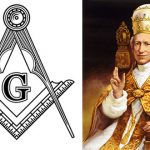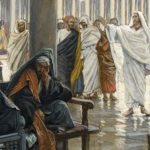Our Lady of Guadalupe
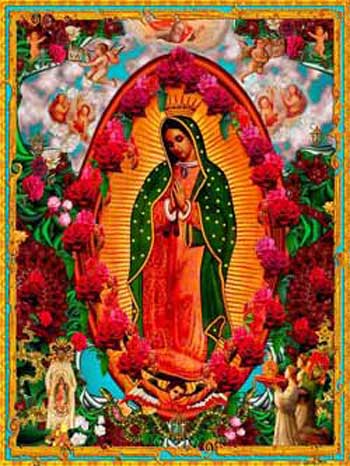 In 1531, an Aztec peasant by the name of Juan Diego – one of the few locals of Mexico who had accepted the Christian faith from the newly arrived Europeans, was hurrying to Mass before dawn. Suddenly, he stumbled across a stunningly beautiful woman bathed in sunlight calling out to him by name. “Juan Diego! Juanito!”
In 1531, an Aztec peasant by the name of Juan Diego – one of the few locals of Mexico who had accepted the Christian faith from the newly arrived Europeans, was hurrying to Mass before dawn. Suddenly, he stumbled across a stunningly beautiful woman bathed in sunlight calling out to him by name. “Juan Diego! Juanito!”
After a series of events too wonderful to recount here in all their detail, Blessed Juan eventually found himself before the local Bishop with a collection of roses gathered by the woman in his Indian cloak – or Tilma.
As he opened the cloak to present the roses, the Bishop and his assistants immediately fell to the ground prostrate, for on the cloak was a beautiful and other-worldly image which they immediately recognised as Our Lady.
However, not only did the inveterate Christians recognise the rich image, so did the local Aztecs! In their culture, sun-rays symbolised divinity; black waist bands, pregnancy and royalty, and unbraided hair, virginity. There were many other details in the image which made the Aztecs recognise that this woman was truly the Mother of God.
Furthermore, our Most Blessed Mother had asked through Juan’s uncle who was miraculously healed earlier that day, to be called Our Lady of Guadalupe. The locals understood this as “de Guatlasjupe”, or “tetlcoatlaxopeuh”, which meant in their language “The Stone Snake Crushed.”
Very quickly, one of the greatest mass conversions in history took place. A continent which had only a decade earlier practised the most inhuman and cruel barbarism imaginable in the name of a false religion, now embraced Our Lady and the Gospel of Life for which she so bitterly suffered.
“I am the Always Holy Virgin Mary, Mother of the true God. Deeply and intensely do I desire that a temple be raised here. Here I shall show, manifest, and give all my love, my compassion, my help, and my protection to mankind. I am truly your compassionate mother; yours and all those who live united in this land; and of all the other peoples who are my loving ones, who cry to me, who seek me, and who trust in me. Here I shall listen to their weeping and sadness in order to remedy and alleviate their many sorrows, needs and miseries.” – Our Lady of Guadalupe
Saint Joseph
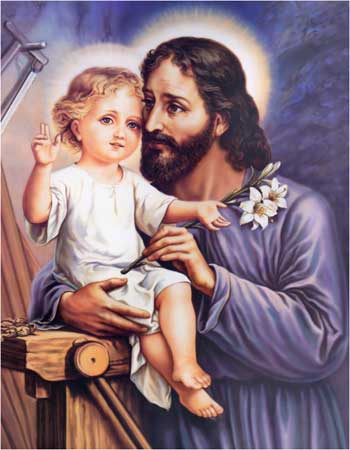
St. Joseph was the legal father of Our Lord Jesus Christ. This wonderful and humble father had the unimaginable honour of holding the baby Jesus in his arms, and helping Him to grow up, to learn, and find his way through childhood and adolescence. He also had the unparalleled dignity of being the legal husband of Our Lady, and so faithfully serving her and helping her in her many journeys, fatigues and persecutions. He was lineally descended from the greatest king of the tribe of Judah, David and from the most illustrious of the ancient patriarchs, including his namesake, Joseph.
The courage and virtue of St. Joseph was especially displayed when he protected Jesus from the jealousy of Herod, who ordered every boy under the age of two around Bethlehem to be murdered.
As Pharaoh said to the Egyptians in their distress, “Go to Joseph”, so too today, FLI confidently turns to St. Joseph, who in the face of the murderous tyranny of Herod, showed the world a very different understanding of power, and a different attitude to innocent life.
Saint Gerard Majella
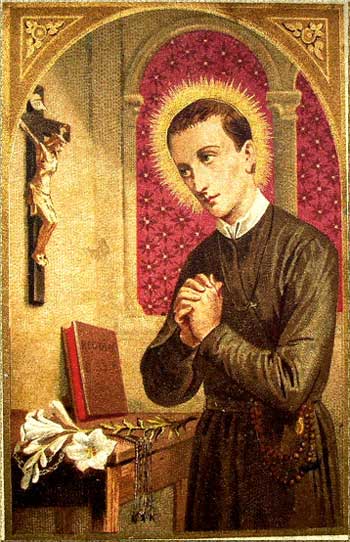 Born in Italy in 1726, St. Gerard was an extremely sick baby. His feeble condition persisted his entire life, until he died from tuberculosis at the age of 29.
Born in Italy in 1726, St. Gerard was an extremely sick baby. His feeble condition persisted his entire life, until he died from tuberculosis at the age of 29.
Despite his condition, it fell to him to support his family after his father died while Gerard was still very young. He apprenticed as a tailor, but had a foreman who belittled his devotion to the Eucharist and his constant works of charity.
Gerard withstood the criticism, however, dividing his earnings equally between his family, the poor and Mass stipends for the release of souls in purgatory.
He tried to join two religious orders but was rejected as too weak. He was finally admitted as a lay brother in the Redemptorists after the superior saw “he could do the work of three men.”
Only one instance is recorded of his curing an expectant mother of her illness while he was alive, but there were many women who claimed that they and their children were granted graces through the prayers of Gerard.
One day, when he was leaving the house of a family he had gone to visit, he dropped his handkerchief. A young woman retrieved it, but as she handed it to him, Gerard told her prophetically, “Keep it. One day it will be of service to you.”
Although puzzled, the woman did keep it. And a few years later, she faced life-threatening complications as she was about to give birth to her first child. She remembered the mysterious hanky and the promise, and asked that it be brought to her in her travail. She held it to her womb and immediately the pain ceased and she delivered a normal, healthy child.
With time, all of the mothers of Italy took Gerard to their hearts and made him their patron, and today he is known as the Saint of Happy Childbirth, and the Mother’s Saint.




